G2 recently released their May ‘24 State of Software report, and it includes some fantastic nuggets on the momentum of AI adoption. It revealed the number of new AI products grew an astonishing 44% year-over-year. Not super surprising - the recently launched State of Martech Report found the number of martech solutions grew at a 41.8% CAGR.
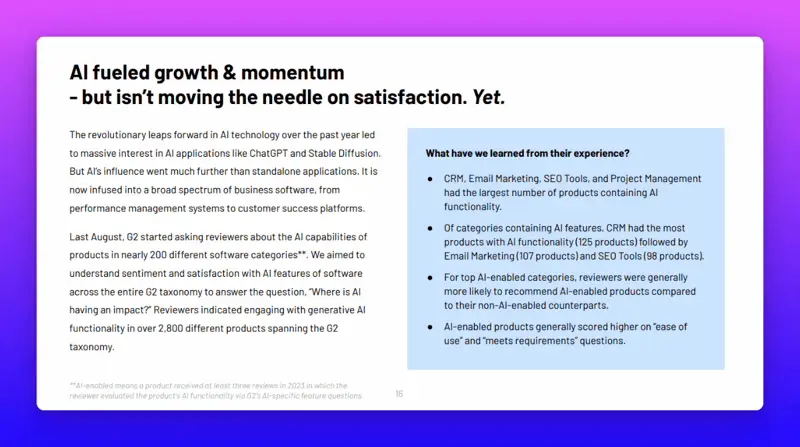
G2's report uncovered something even more interesting - AI isn't moving the needle on satisfaction. Yet.
“Yet” is an important caveat. AI, and the adoption of AI, is still nascent. I'm writing this in a Starbucks near my home and - looking at the screens around me - I don't see a whole lot of AI. I see lots of locally installed apps like Microsoft Word and Excel, lots of manual copy/pasting, and people writing notes on physical notepads. AI functionality isn't fully integrated into the systems people are already using. Yet.
It's harder to move the satisfaction needle if the adoption needle hasn't moved all that much. A third of European businesses have adopted AI, a 32% growth rate in a year - but that still means two thirds of them are living in legacy-land.
New habits take time to form, even in an AI-enabled world
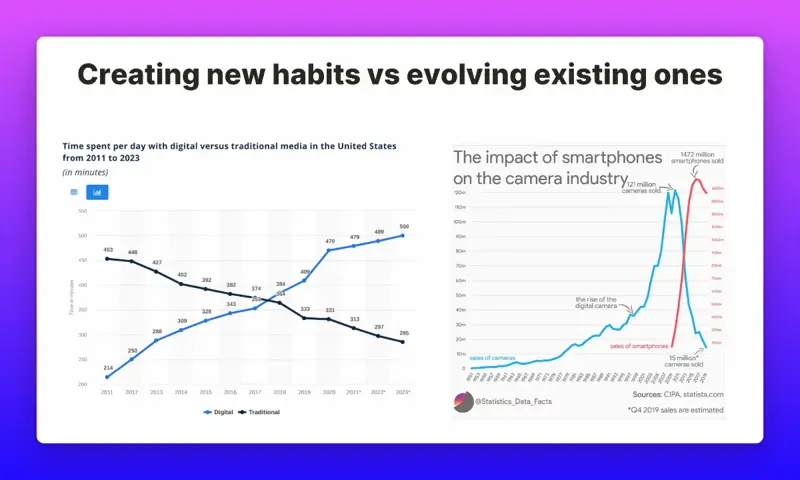
In the US, time spent per day on digital media overtook time spent per day on traditional media in 2018. Wait, 2018? If you’re a technology nerd like me, that’s a decade longer than you would have expected. Why? Because new habits take time to form.
Changing habits induces a fear of the unknown
For software buyers, AI fear can manifest in a bunch of different ways, like:
- If I use ChatGPT to write blog posts for me, will Google penalize my website out of existence?
- If I use OpenAI to ask questions of my data, will the answers magically appear in a response to another user?
- If I use GitHub Copilot, and accidentally include API keys in my code, could I invite a security breach?
- If I buy into AI too much, could I… do myself out of a job?
AI startups are investing heavily in privacy and moderation tools to assuage these fears, but still - habits are habits, fears are fears. For builders of these new technologies, patience is required.
"AI-enabled" is a smaller leap
There are positive signals from software buyers that overcame their fears of AI, and evolved their habits to make use of it day-to-day. For top AI-enabled categories, G2 reviewers were generally more likely to recommend AI-enabled products compared to their non-AI-enabled counterparts. And AI-enabled products generally scored higher on “ease of use” and “meets requirements” questions.
So, net-net, a sprinkling of AI makes everything better. But everything can only get better with a sprinkling of AI if it's enabled through a composable approach. Which brings us to the title of this post.
What's composability?
Composable systems are a set of design principles and architecture decisions that define and standardize the relationships between components in a system, or across systems. Instead of building "once off" components and services to create one application, composable products and platforms are defined as building blocks and functionality that can be deployed independently, but combined and rearranged to simple and complex products, both large and small in scale.
Components
Just like Lego blocks, components need to be designed to work together to create high performance, adaptable systems. You should be able to break your product up, and put it back together again - even with different sized or different color bricks. A component's behavior should be predicable to use, easy to maintain, and easy to combine with other components in other systems.
A composable approach helps build systems that are powerful and changeable. Outside of the world of software, composability has been a trend across various industries for many years now.
Frameworks
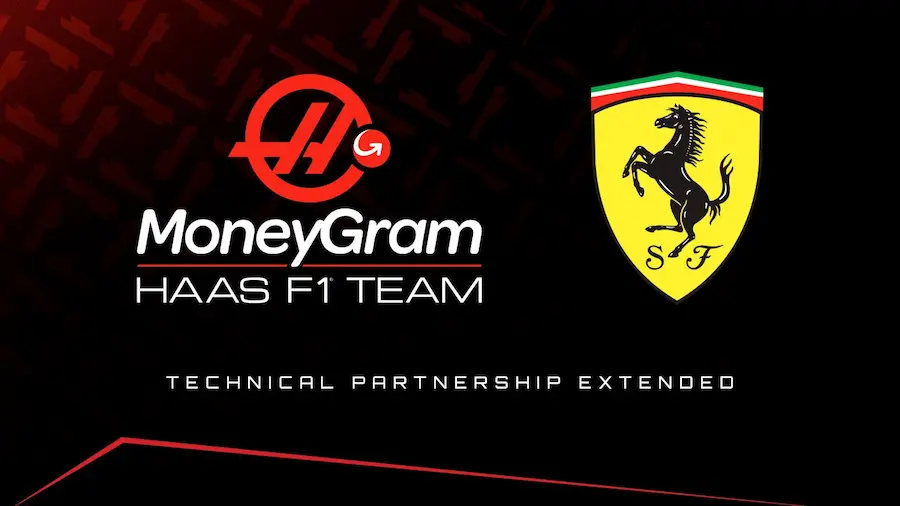
Many of the components of your mobile phone are shared with many other mobile phones, across different specs and brands. Formula 1 cars - even though they compete with each other - share many components across them.
Haas F1, for example, "buy" engines, gearboxes, and other components from Ferrari, so they can focus themselves on designing differentiated parts of the car. A composable approach - stitching systems and resources together to build cars - helps them increase performance and become more competitive, more quickly.
But Haas F1 can't build what they need to build with components alone. A composable approach also depends on strong support, clear definitions, and guidance from Ferrari on how best to integrate their own systems with every component provided to them.
Creating the building blocks of a compsable systems
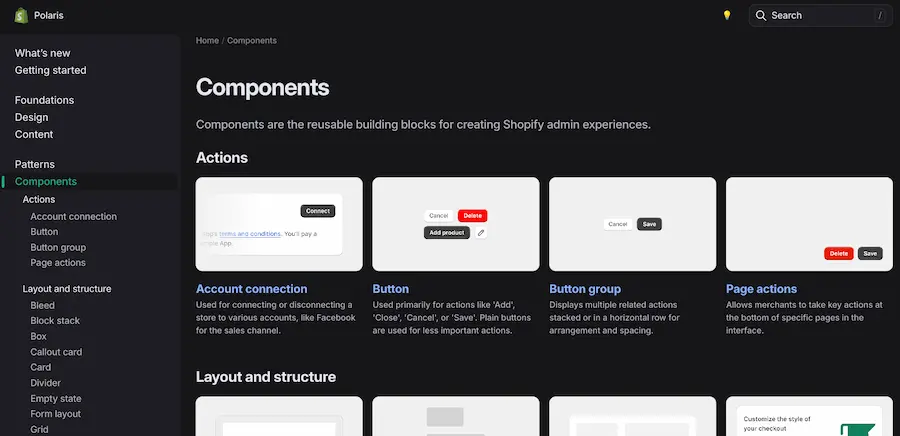
Building a composable system comes with its own set of challenges, particularly when it comes to integrating other components with those defined, designed and delivered by your own teams. Ensuring interoperability and data exchange between each component is a complex challenge. There are different combinations of capabilities, design patterns, and data models.
Shared standards
Standardized communication protocols and data formats, through well defined APIs and microservices, simplify the process of building composable systems. Deployed independently of each other, these standards provide a common language for components to interact with each other, leading to faster implementation and reducing the likelihood of data inconsistencies across systems.
Modular components
Modular and loosely coupled components can help manage dependencies and interactions more effectively. One set of services and components can quickly be swopped out in favor of another. It all adds up to a composable approach that - like Lego blocks - encourages partner innovation and productivity. It helps them to focus on the creation of unique product value.
Ecosystem partners depend on composable systems
The best-performing platform partners share core, common traits. The products they build are usually crafted to an extremely high standard. Integrations eliminate work-work and deeply integrate data and workflows. “Built for Platform” products like solve clear user problems incredibly well.
Every solution they create makes the user experience better.
As a result - for the highest quality, best managed products - five star App Marketplace reviews are the norm. Five star reviews eliminate fear for potential buyers, encouraging them to create new habits around the software you hope to sell to them. They make the process of selling to these new customers better.
Quite often, though, not-so-great reviews of products built by platform developers are not the byproduct of the developer doing a bad job. Constructive reviews can often refer to a less than optimal integration process, or the inability of the product they're reviewing to deeply integrate well with the platform they're using with it.
The user is often negatively reviewing the lack of a composable approach from the platform, not the products built using those "building blocks." Excessive complexity is often a byproduct of inconsistent platform capabilities and methods.
The SaaS business is a composable architecture business
Atlassian is one of my favourite examples of a platform that invested early and wisely in a composable approach. Without it, Atlassian wouldn't have been able to quickly acquire and integrate products like Trello. Every product Atlassian acquires is deployed independently of Jira, Confluence, and Atlassian's other products. The systems Atlassian implemented for to enable their partners to create value helps Atlassian acquire and integrate new companies faster.
Building a high-quality, composable moat
This composable approach has helped Atlassian grow an ecosystem of over 1,800 partners who build and manage over 6,200 apps and integrations.
Partner-built apps and integrations can often offer better functionality than Platforms they integrate with. It’s the main reason customers substitute features/modules in central platforms with different/specialist apps - aggregating existing habits in favour of the Platform, which helps customers form new, longer-lived habits overall.
Composable roducts created by third party developers helps Atlassian customers evaluate and “future proof” the purchasing decision they’re about to make. Buyers can also quickly understand if they can “grow into” - and form habits around - Atlassian over time.
Customers know they can "swop in" and "swop out" every essential solution as they need it (or don't). The composable systems they've built are a powerful moat for Atlassian.
Interoperability is essential for the enterprise
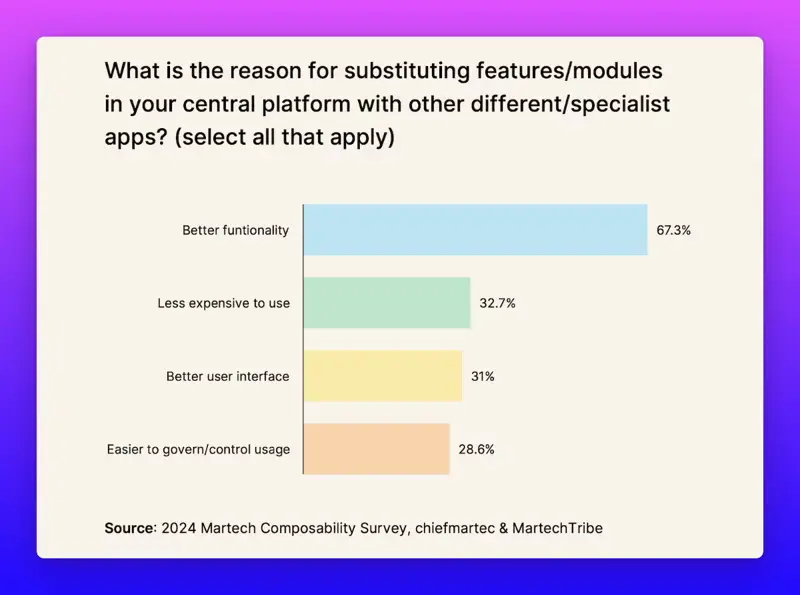
A composable approach doesn't just create solutions that help customers evaluate and adopt new platforms more quickly. It also enables value creation that lasts all the way through the customer lifecycle.
Integrations keep activity high, which can ward off churn risk. The SaaS business is a habit business. If customers can’t quickly build daily and weekly habits around products and platforms, they churn faster.
Interoperability is an essential component of every retention strategy in SaaS. Getting new customer solutions implemented quickly, and making day-to-day management of each connected service easier increases the likelihood of customers retaining for longer. A composable strategy is a growth strategy.
The future of composability in an AI-first world
Composability is still a new concept in many earlier stage SaaS businesses - and many later stage "platforms" too. Many companies don't fully understand the potential and benefits of a composable approach, even as the range of technology and tools continues to advance.
This website is a real world example. It's built on a set of composable systems including Astro, Netlify, Neon, and Ghost. Each of which connects with a variety of other business applications, enabling almost limitless composability in every direction.
It also increasingly relies on AI for process automation and efficiency gains. Our services (as of writing) make around 60,000 API calls to OpenAI APIs every single day, for a variety of tasks.
As artificial intelligence and machine learning continue to evolve, composability will become even more important. We already can - if we want to - quickly integrate new tools and technologies like Anthropic, Azure, and AWS if and when we want to. Our composable architecture provides the perfect foundation to help us build and integrate with an increasingly complex set of intelligent systems.
The emergence and growth of new AI tools and frameworks - combined with a growing number of API-enabled products - sets App Marketplaces up for a new decade of growth. Composable stacks, effectively “bundles” of apps, integrations, and AI capabilities, will further reinforce the importance of interconnected, adaptable systems and well managed marketplaces.
A growing choice of marketplace-distributed apps, integrations, and AI are set to make everything better for platforms, partners, and - most importantly - customers. Composability is is a key component (pun intended) to help create better user experiences and more manageable, products.





